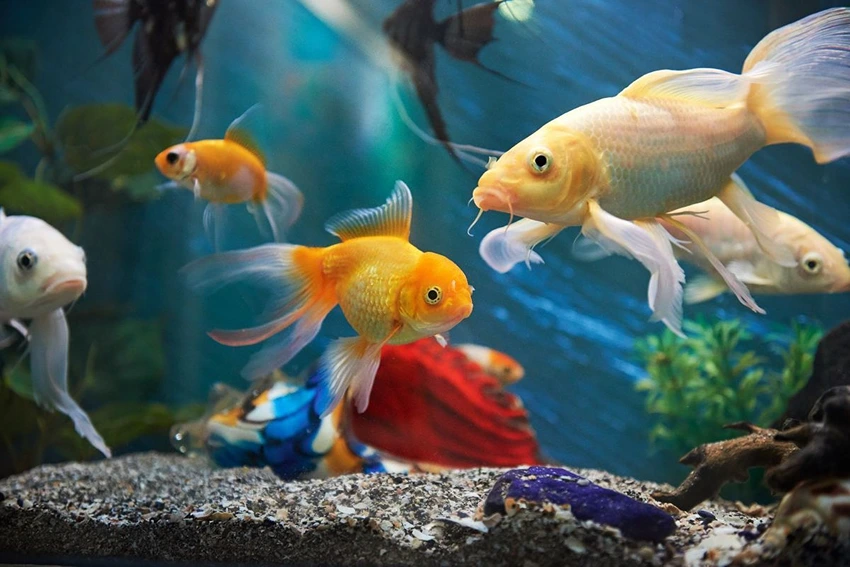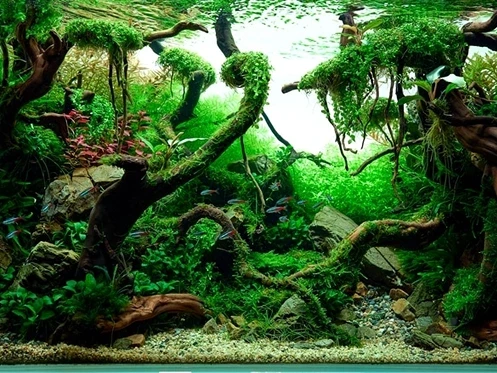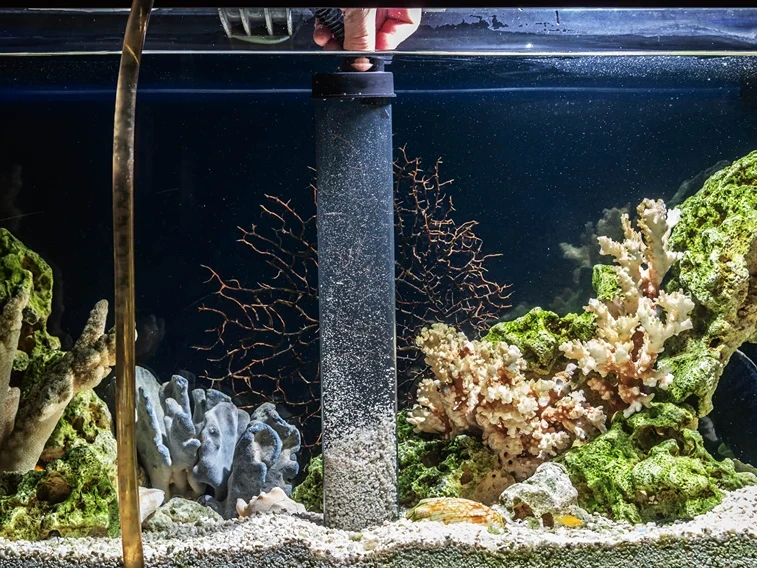Creating a balanced and peaceful aquarium is much like composing a symphony; each element must harmonize with the others, from the fish species to the environment they inhabit. In the United Kingdom, where the aquarium hobby thrives among enthusiasts of all ages, understanding the dynamics of compatible tank mates is essential. This guide delves into the intricacies of selecting the right companions for your aquatic pets, ensuring a thriving underwater community.
Key Takeaways
- Choosing compatible tank mates is crucial for a harmonious aquarium.
- Consider species temperament, size, and environmental needs when selecting tank mates.
- Community tanks require careful planning to avoid aggression and stress among inhabitants.
Register for our latest in-depth reviews and product round-ups from the experts
Enter your email address below to receive our twice monthly reviews emails.
By entering your details, you are agreeing to our terms and conditions and privacy policy. You can unsubscribe at any time.
Introduction to Tank Mates
The journey to a vibrant, healthy aquarium begins with the selection of compatible tank mates. This choice is pivotal, as it influences not only the well-being of your aquatic pets but also the overall balance of your underwater ecosystem. In the UK, where diverse species are readily available, the potential for creating a mesmerizing aquatic display is limitless. However, the harmony of this underwater world hinges on a thorough understanding of the factors affecting compatibility.
Factors Influencing Fish Compatibility

Species Temperament and Behavior
The temperament of a fish is a fundamental aspect to consider. Species such as bettas and cichlids often display territorial behavior, which can lead to stress and aggression if not properly managed. On the other hand, community fish like tetras and guppies are known for their peaceful nature, making them ideal candidates for a communal tank.
Size and Growth Potential
The size of the fish, both current and potential, plays a crucial role in compatibility. Larger fish may inadvertently (or intentionally) harm smaller, more delicate species. It’s essential to research the full growth potential of your chosen species to ensure they can coexist comfortably.
Habitat and Environmental Needs
Each species has unique requirements regarding water parameters, such as pH, temperature, and hardness. For instance, discus fish thrive in warmer water, while goldfish prefer cooler temperatures. Creating a tank environment that caters to the needs of all inhabitants is key to their health and happiness.
Common Compatible Tank Mates for Popular Aquarium Fish
In the UK’s diverse aquarium market, several species stand out as popular choices for hobbyists. Here, we explore compatible tank mates for some of these beloved fish.
Betta Fish Tank Mates
Bettas are renowned for their vivid colors and majestic fins but are often misunderstood as solitary creatures. While they do require careful selection of tank mates, several species can coexist with bettas peacefully. Snails, shrimp, and small, non-aggressive fish like neon tetras can make excellent companions.
Goldfish Companions
Goldfish are a classic choice for aquarium enthusiasts, known for their hardy nature and varied sizes and shapes. Compatible tank mates include rosy barbs and platies, which share similar water temperature and quality requirements.
Community Tank Recommendations
Creating a community tank is an exciting challenge, offering the opportunity to mix various species. Key considerations include choosing fish that occupy different levels of the tank (top, middle, and bottom dwellers) and ensuring similar water condition preferences. A harmonious community tank can include tetras, guppies, mollies, and corydoras catfish, among others.
Table 1: Compatibility Chart for Popular UK Aquarium Fish
| Fish Species | Compatible Tank Mates | Water Temperature (°C) | Notes |
| Betta | Neon Tetras, Snails, Shrimp | 24-28 | Avoid fin-nippers |
| Goldfish | Rosy Barbs, Platies | 20-23 | Require ample space |
| Guppies | Mollies, Corydoras Catfish | 22-28 | Peaceful, vibrant community |
This table serves as a starting point for selecting tank mates. However, individual fish personalities can vary, and it’s important to monitor your aquarium for signs of stress or aggression.

Special Considerations for Peaceful Coexistence
Achieving a peaceful aquarium environment requires more than just selecting compatible species. Here are additional factors to consider:
Dealing with Territorial Behaviors
Provide plenty of hiding spots and territories within the tank to reduce competition. Decorations, plants, and caves can help mitigate aggressive tendencies.
Managing Feeding Habits and Dietary Needs
Ensure that all fish receive appropriate nutrition without competition. Feeding in different tank areas and providing a variety of foods can cater to the diverse dietary needs of your aquatic pets.
Tank Size and Setup Optimization
A spacious tank allows for adequate territories and swimming space, reducing stress and aggression. The general rule is the bigger, the better, especially for community tanks.
In the United Kingdom, where the aquarium hobby is embraced with passion, understanding and implementing these principles of compatibility can lead to a thriving aquatic ecosystem. Whether you’re a seasoned aquarist or a newcomer to the hobby, the joy of observing a harmonious, vibrant aquarium is unparalleled..
Advanced Considerations for Peaceful Coexistence
Creating a balanced aquarium goes beyond initial compatibility; it requires ongoing observation and adjustment. Here are some advanced tips to ensure your tank remains a peaceful haven for its inhabitants.
Monitoring and Maintaining Water Quality
Water quality is paramount in an aquarium, affecting fish health and behavior. Regular testing and maintenance ensure optimal conditions, reducing stress and aggression among tank mates. Aim for consistent water parameters, performing regular water changes and filter maintenance.
The Role of Plants and Hiding Spots in Reducing Stress
Aquatic plants and decorations play a crucial role in an aquarium’s ecosystem, providing essential hiding spots that help reduce stress. Dense plantings and varied landscape features encourage natural behaviors, offering refuge for smaller or shy fish.
Tips for Introducing New Fish to the Aquarium
Introducing new fish to an established tank requires care to avoid disrupting the balance. Quarantine new arrivals to prevent disease spread and introduce them gradually to the main tank, monitoring for signs of aggression or stress. Adjusting the tank layout can also help minimize territorial disputes during introductions.

FAQs on Compatible Tank Mates
For aggressive species, choose tank mates of similar size and temperament that can hold their own without escalating conflicts. Species such as convict cichlids or larger tetras can be suitable companions for more assertive fish.
A general rule is 1 inch of fish per gallon of water, but consider the adult size of your fish and their specific needs. Overcrowding can lead to stress, disease, and water quality issues.
While some cichlids can coexist, careful selection is crucial. Consider water conditions, size, and aggression levels. African and South American cichlids, for example, often require different environments and may not be compatible.
Creating a Harmonious Aquarium Environment
The ultimate goal of any aquarist is to create a thriving, peaceful aquarium where all inhabitants live in harmony. This requires a blend of careful planning, ongoing observation, and a willingness to learn and adapt.
Table 2: Water Quality Parameters for a Community Tank
| Parameter | Ideal Range |
| pH | 6.5 – 7.5 |
| Ammonia | 0 ppm |
| Nitrite | 0 ppm |
| Nitrate | < 20 ppm |
| Temperature | Depends on species |
Table 3: Plant Recommendations for Reducing Stress
| Plant Type | Benefits |
| Java Fern | Easy to care for, provides excellent cover |
| Anubias | Hardy, offers broad leaves for hiding |
| Moss Balls | Aesthetic and functional, beneficial for water quality |
By incorporating these advanced considerations and addressing common questions, you can enhance the well-being of your aquarium’s inhabitants and enjoy the beauty of a well-balanced aquatic ecosystem.
Martin Cochran
Dive into fish care with Martin, your guide from the coastal beauty of Brighton. He shares tips on keeping your aquatic companions happy and healthy. Join him on a fin-tastic journey where every swim is a voyage of joy. Trust Martin for a smooth sailing aquatic experience.




